Today, while waiting for the ordered alkaline batteries to arrive, I plan to design a sequence and layout for a realistic play.
First, I worked on the sequence and layout while waiting for the batteries. I started by thinking about the placement of the speakers. The space where I plan to exhibit is my living room, which is a typical rectangular shape. Initially, the plan was to use 16 speakers, but there were limitations: the Arduino I’m using has only 14 digital pins available (and typically, only 12 pins are commonly used. While it is possible to expand the number of controllable pins using a breadboard, I wanted to avoid making the circuit more complicated). Moreover, I was constrained by my budget (which was the most critical factor). As a result, I decided to use a total of 12 speakers—a choice that, considering the challenges I’m now facing, turned out to be an excellent decision. With this in mind, I began arranging the layout.
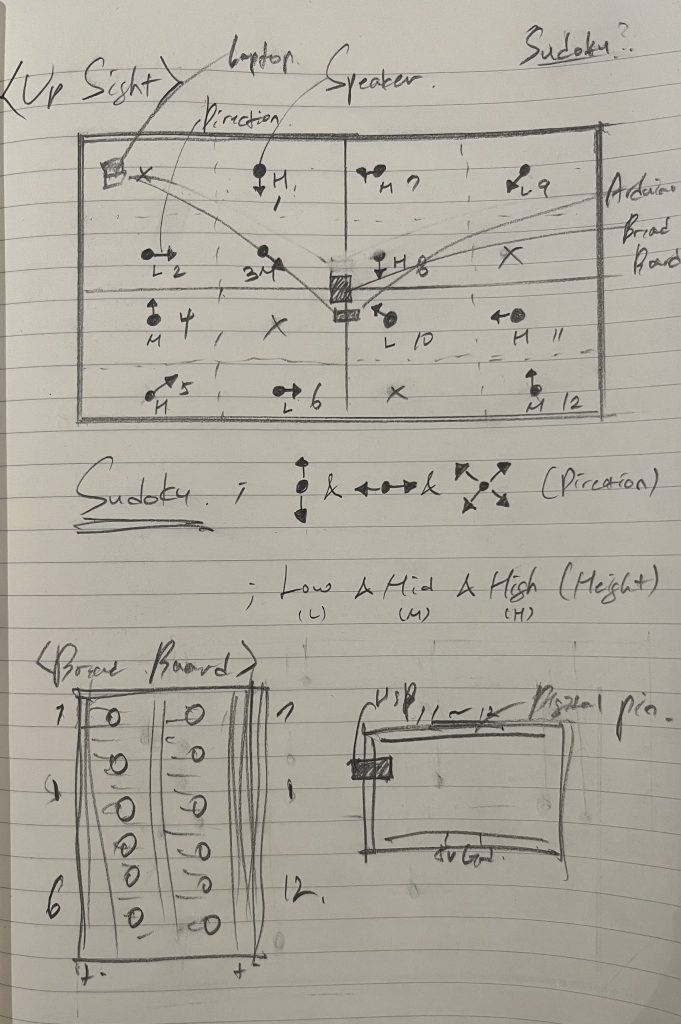
In terms of speaker placement, I focused on balance and asked myself how to best achieve that balance. Factors to consider included the direction of the speakers, their height, the thickness of the metal plates attached to the speakers, and the spaces where no speakers would be mounted. To align all of these aspects, I employed a specific logical framework: Sudoku. Typically, Sudoku is a game where numbers from 1 to 9 are placed within a 9×9 grid (composed of 3×3 tiles) without repetition in any row, column, or tile. Inspired by this, I first arranged the spaces without speakers, ensuring there was no overlap horizontally, vertically, or within tiles. For the speaker directions, I considered front-to-back, side-to-side, and diagonal orientations, avoiding overlap. Heights were also assigned within the same framework. The channels for each speaker were arranged with consideration for the Arduino’s placement and ease of connection.
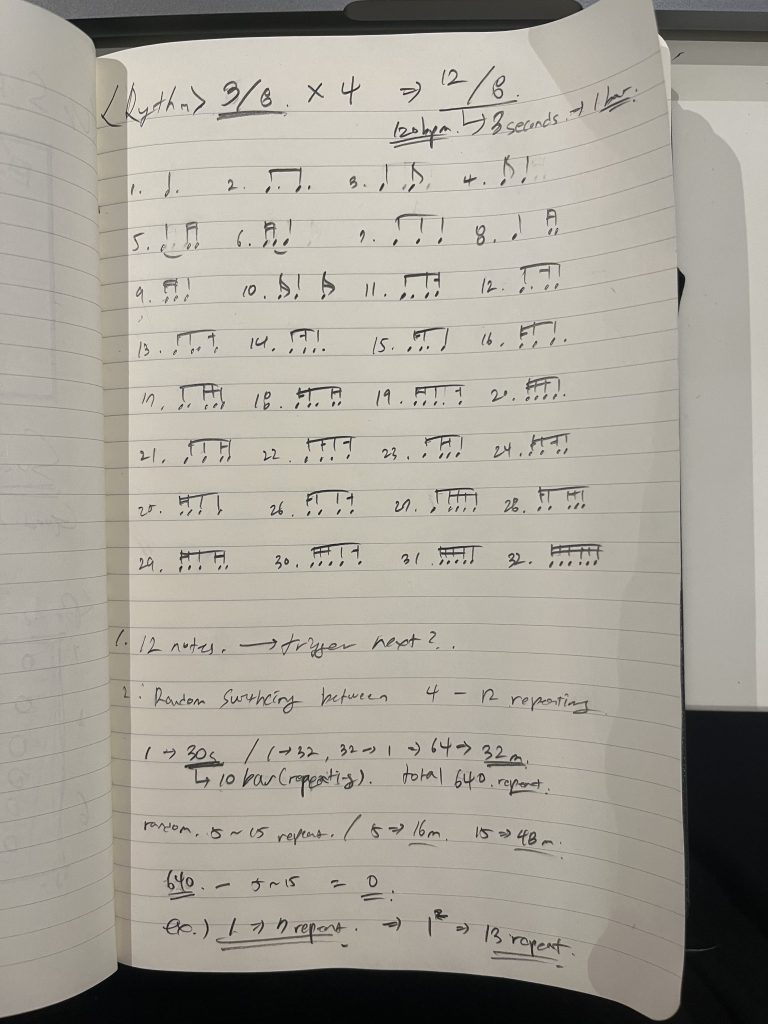
Next, I worked on defining the sequence. I drew inspiration from works such as Steve Reich’s phase shift pieces and Terry Riley’s In C, listening to them for ideas. While doing so, I recalled rhythmic patterns I had studied during my high school classical composition days—all possible rhythmic patterns that could emerge in 3/8 time, with sixteenth notes as the smallest subdivision. I decided to combine these rhythms with the performance approach of In C to create my sequence. I first drew out 32 different rhythmic patterns and then considered how to arrange them. The planned performance time was about 30 minutes. With 64 rhythm plays (from rhythm 1 to 32 and back again), an average of 10 repetitions per rhythm would make up about 30 minutes (based on 120 BPM and a 12/8 time signature). Initially, I thought of switching to the next rhythm after 12 repetitions of each rhythm. Another idea was to switch randomly between 4 to 12 repetitions. The latter was closer to In C’s performance style, so I chose it—not solely because it was similar to In C, but because the first method risked overly simplifying the rhythmic combinations across the speakers.
After deciding on the random switching approach, I considered how many repetitions would be appropriate and settled on a range of 5 to 15 repetitions. I planned to generate the repetition count randomly using Max, but since I needed the average repetition count to be 10, I decided that if a rhythm played 13 times in one instance, it would play only 7 times during the next cycle (subtracting the first count from 20). For example, if rhythm 1 played 13 times, then after completing rhythms 2 through 32, rhythm 1 would play only 7 times in the next cycle. I created a Max patch to generate random repetition counts for rhythms 1 through 32. To add variety and flexibility, I set the starting point randomly and ensured rhythm 32 would be played only once (partly because rhythm 32 consists of a repeating pattern of six sixteenth notes, which might become too noisy if repeated excessively).
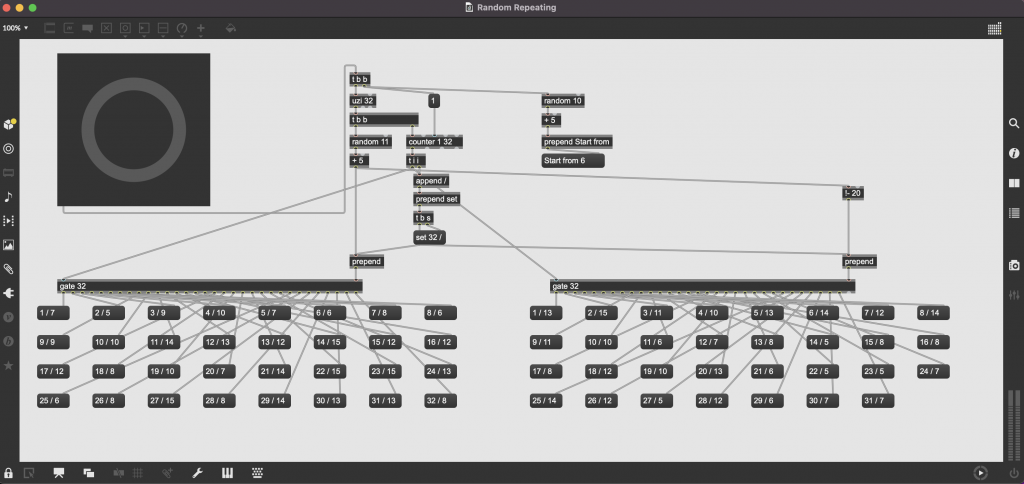
With all sequences prepared, I applied the repetition counts generated in Max and manually input them into Ableton Live MIDI. To preview the sound, I used the Collision Instrument to create tones similar to the metal plates and added spatial effects using the DearVR plugin. While the rhythmic variations were interesting, distinguishing between sounds was challenging because spatial effects weren’t fully implemented. Additionally, electronic sounds are perfectly identical, whereas in reality, subtle differences exist between them, making it easier to differentiate. However, I imagined that the rhythmic combinations would be engaging in a live setup.
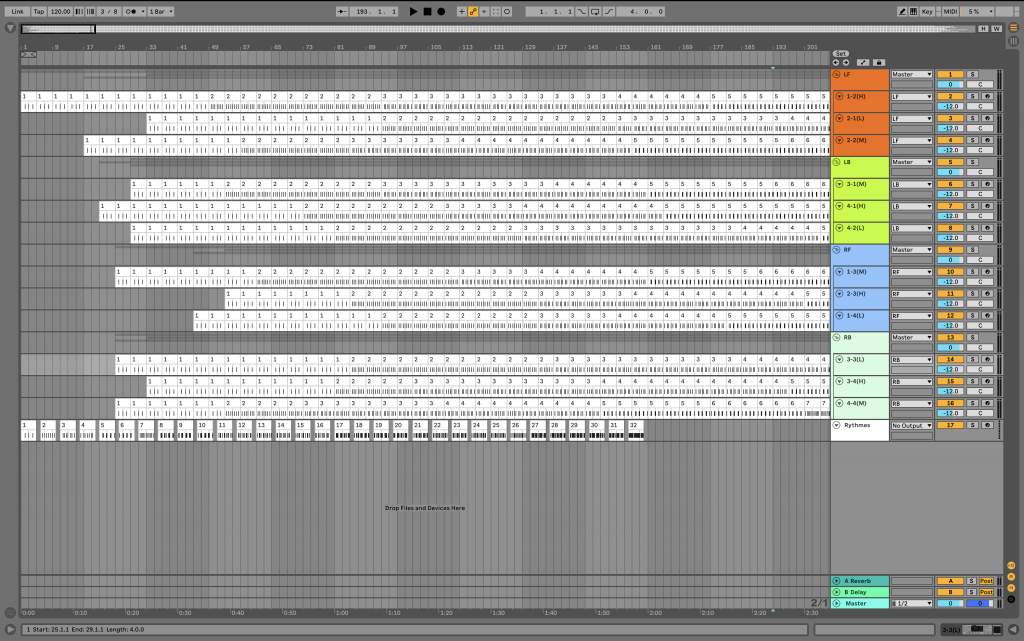
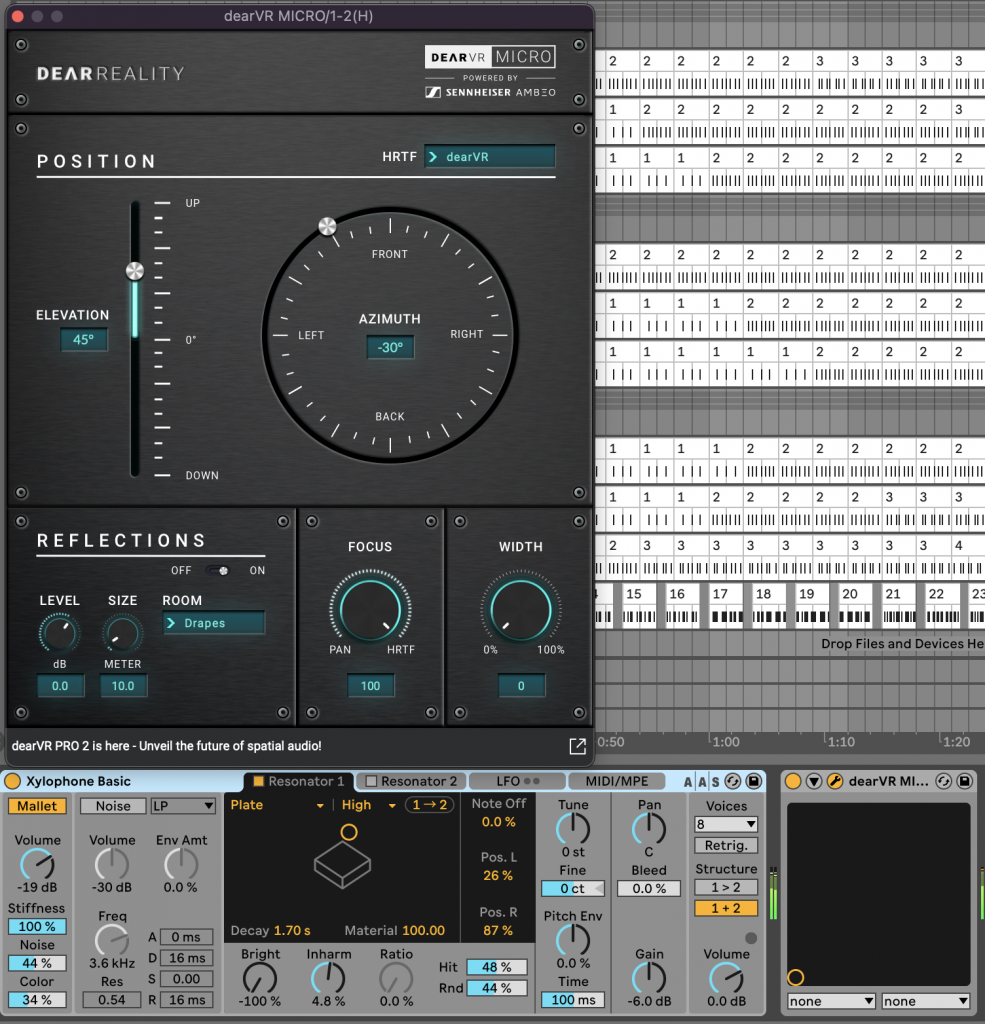
https://soundcloud.com/minsoo-chang-202204699/sequence
And I also tested how to securely hang the speakers in practice. First, I used some string I had at home, attaching it to the loop part of the speaker and taping it to the ceiling. A single layer of tape wasn’t enough, but layering multiple strips made it stable. I was initially worried about how to hang the speakers from the ceiling, but this method seems like it will work.
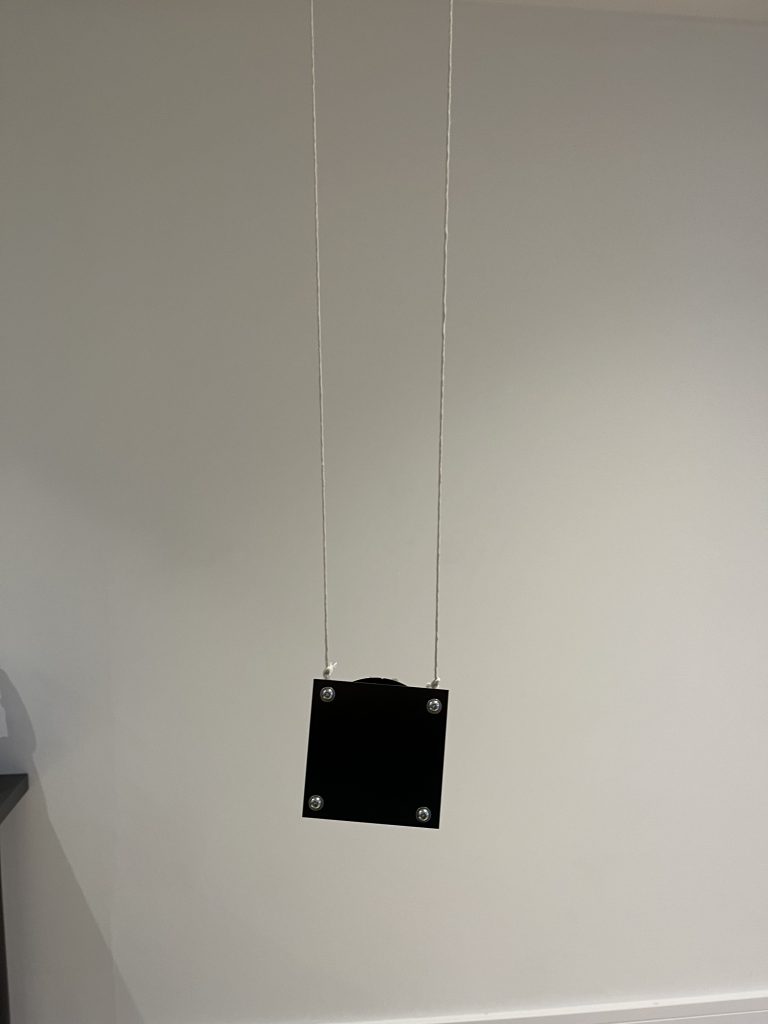
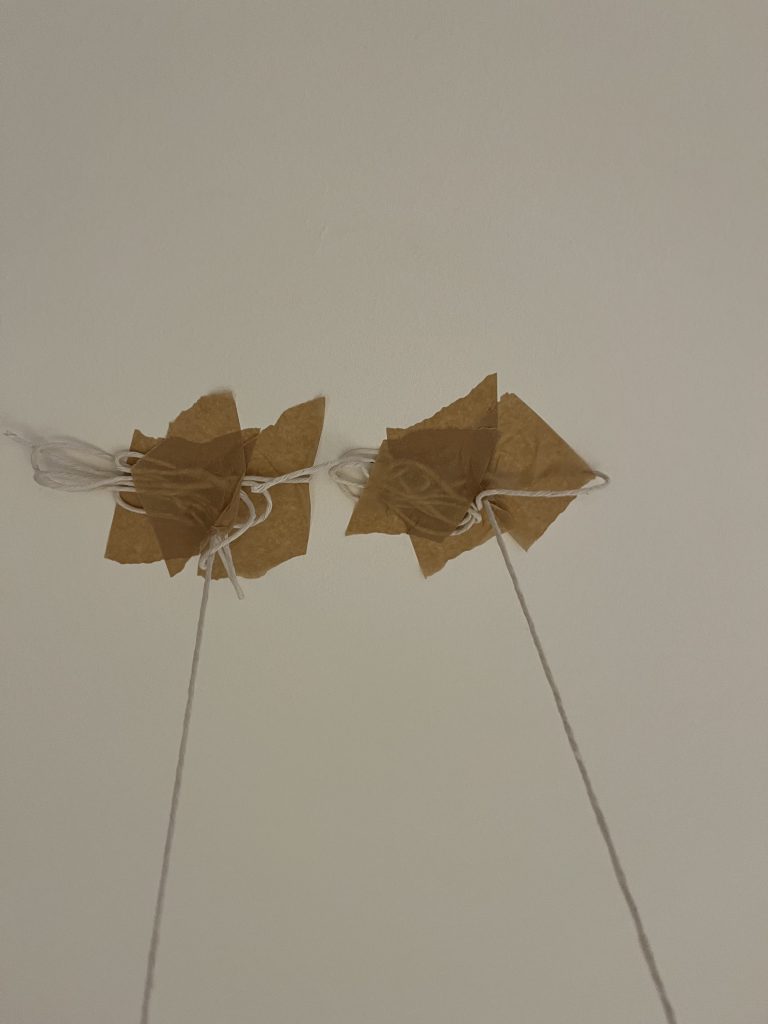
Tomorrow, when the alkaline batteries arrive, I plan to test the prepared sequence.